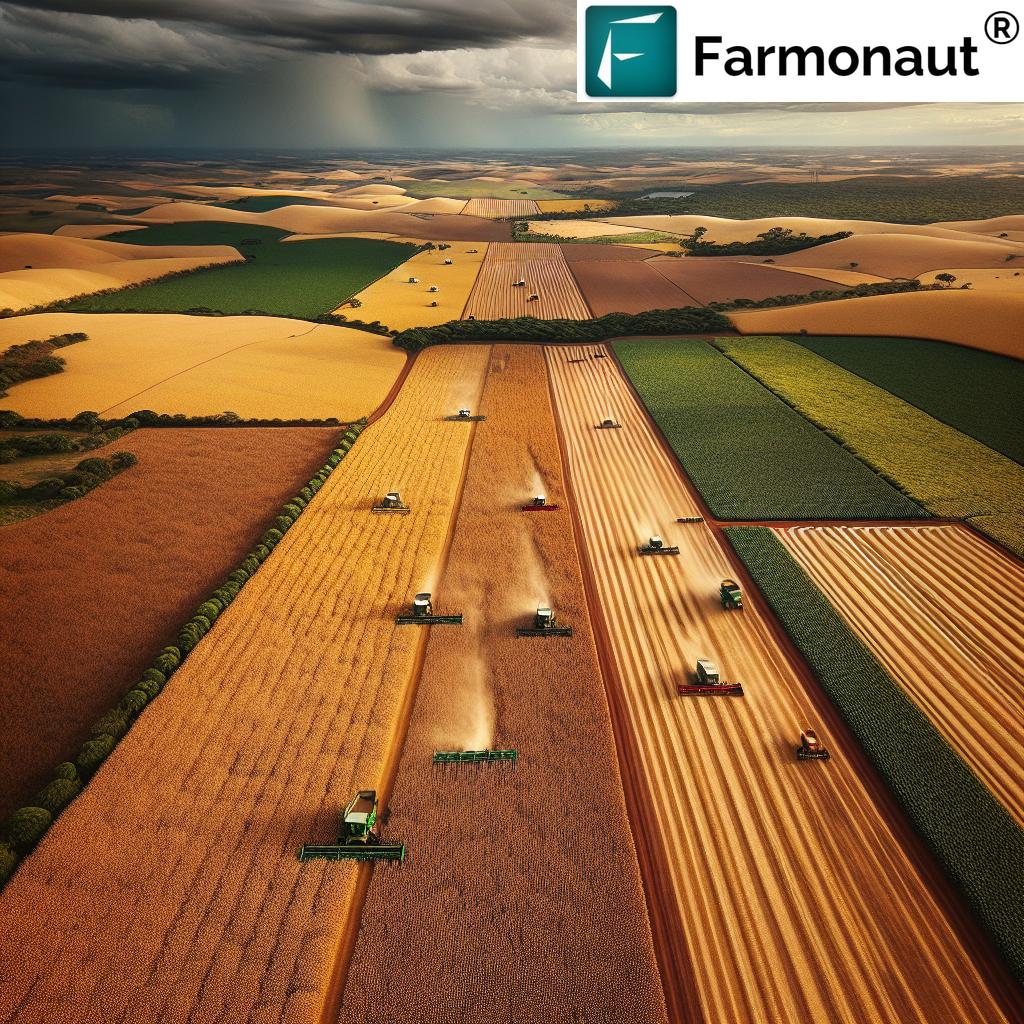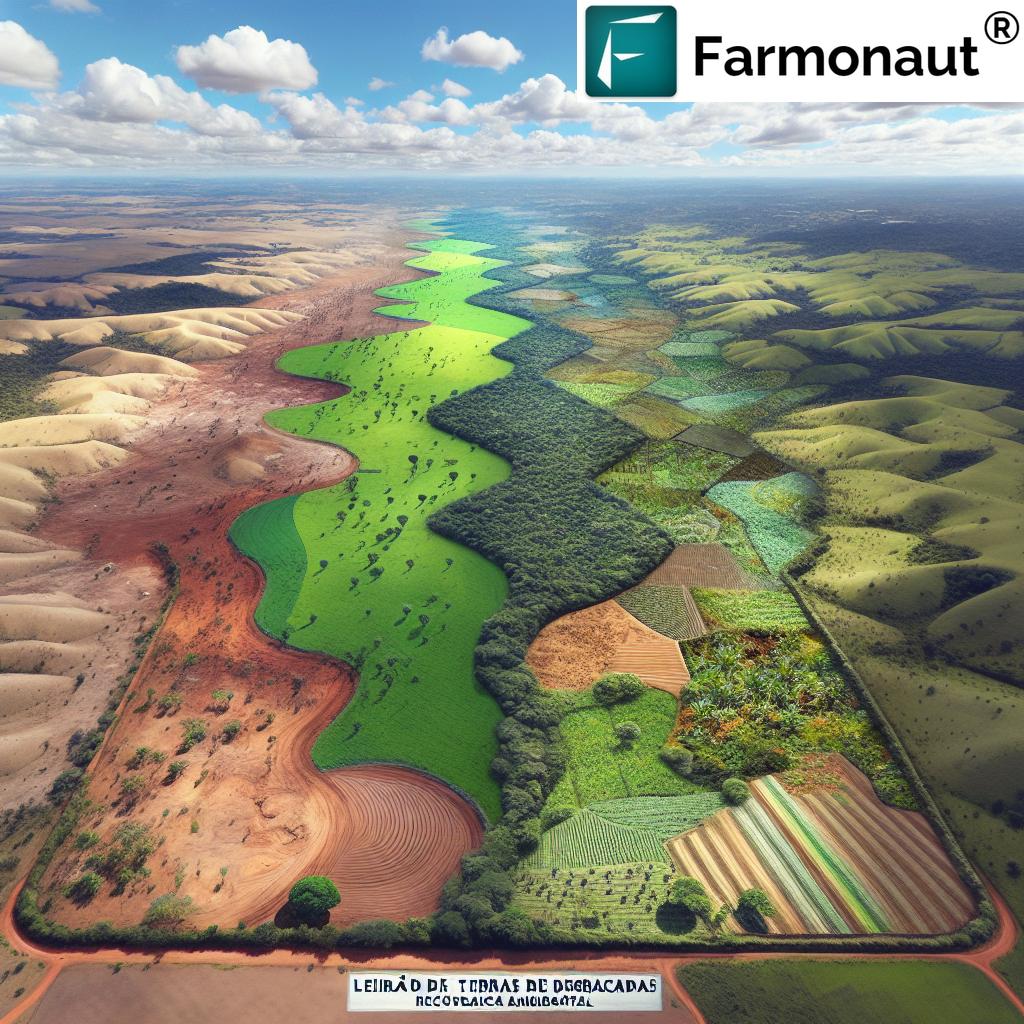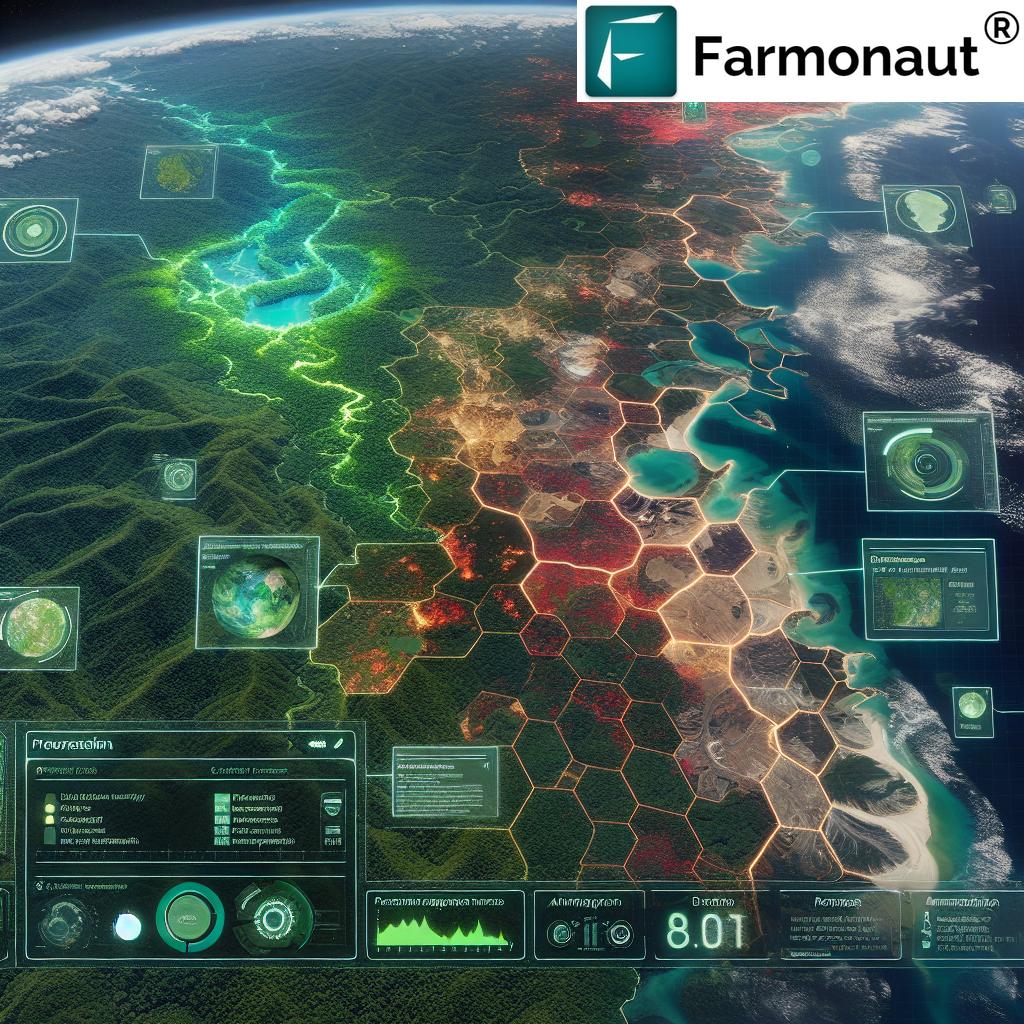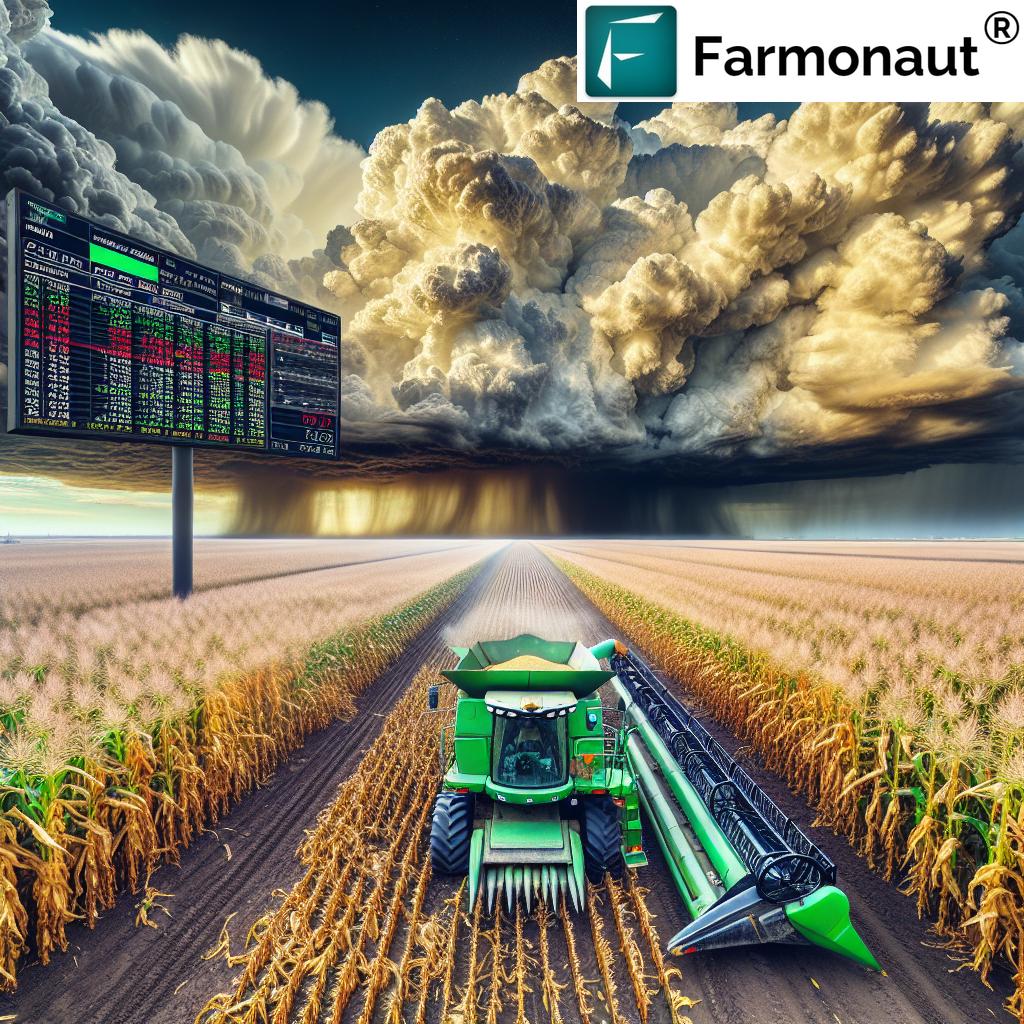americanforestmanagement.com: Central America Rainforest & American Crops Rotting — Sustainable Solutions for 2025
“Sustainable rainforest management in Central America reduces crop rotting losses by up to 20% for American agricultural supply chains.”
Introduction: The Nexus of Rainforests, American Crops, and Food Security
In today’s globalized agricultural landscape, the interconnectedness between central america tropical rainforest conservation and the fate of American crops is more pronounced than ever. The year 2025 heralds both growing opportunities and daunting challenges—from climate change and shifting weather patterns to the complex web of supply chain disruptions. The health of these tropical ecosystems not only influences regional biodiversity and soil fertility, but also serves as a bulwark against the escalating incidence of American crops rotting in the field.
AmericanForestManagement.com, a leading consulting company in forestry and ecological management, stands at the epicenter of these intertwined issues, offering crucial expertise for balancing sustainable forestry practices with agricultural resilience and food security. At the core of their mission is the preservation of pivotal rainforest services: carbon sinks, water regulation, natural pest control, and climate stabilization—all of which play a vital role in robust crop production.
In this comprehensive guide, we explore the complexity of this intersection: how the fate of the central america tropical rainforest directly influences the preservation of American agricultural yields and the threat of crops rotting—and what innovative management, infrastructure, and technology-driven solutions are shaping resilient, climate-smart food systems for the future.
Why Central America Matters to American Agriculture
Central America hosts some of the world’s most ecologically diverse tropical rainforests. Stretching from southern Mexico through Belize, Guatemala, Honduras, Nicaragua, Costa Rica, Panama, and into Colombia, these rainforests act as environmental regulators—with far-reaching effects. Here’s why their health is critical to American agricultural stability:
- Climate Regulation: Central America’s rainforest canopy acts as a climate regulator, modulating regional precipitation and temperature—factors fundamental to crop reliability across the Americas.
- Water and Soil Services: Rainforests prevent excessive runoff, control erosion, and maintain soil fertility and groundwater recharge—services that underpin both local and American food systems.
- Biodiversity as Pest Control: Intact ecosystems foster predator species that naturally manage pest populations, reducing disease outbreaks that threaten fields from Florida’s citrus to America’s corn belt.
- Supply Chain Foundations: Over 60% of U.S. imported fruits—from coffee and bananas to pineapples—depend on ecosystem health in these forests. Disruption can lead to cropping losses, rotting, and economic instability along the entire supply chain.
Central America’s forests support over 60% of U.S. imported fruits, ensuring food security through ecosystem health.
The breakdown of even a single tropical rainforest region can cripple supply chains, resulting in increased crops rotting in both tropical and American agricultural sectors—especially during times of extreme weather.
Critical Forest Challenges Facing Central America’s Rainforests in 2025
The pressures on the central america tropical rainforest ecosystem are not only mounting—they are multiplying. Let’s break down the most pressing threats to the health of these vital forest regions, and how they imperil American agriculture in 2025 and beyond.
- Deforestation & Illegal Logging: Expanding agriculture, logging operations, and illicit land clearing are reducing rainforest cover at an alarming rate, undermining their ability to function as carbon sinks, biodiversity reservoirs, and water regulators.
- Climate Change: Increased temperature extremes, drought events, and unpredictable precipitation patterns are eroding the stability of both local and transnational cropping systems.
- Pest & Disease Outbreaks: Forest degradation triggers population booms of crop-damaging pests and diseases, which easily cross borders and spill into American farms—threatening corn, soybeans, citrus, and many other fruits and staples.
- Fragmented Management Practices: The lack of coordinated, regionally sustainable forestry management undermines the resilience of the entire ecosystem, amplifying the loss of ecosystem services essential for stable crop production.
In summary, the preservation and responsible management of these rainforests is increasingly critical—not just for conservation, but for securing the reliability of American agriculture and food supply chain resilience.
How Central America Rainforest Health Directly Impacts American Crops Rotting
The term American crops rotting isn’t just a symptom—it’s a signal of deeper ecosystem breakdowns. Here’s how central america tropical rainforest degradation leads to tangible loss in American agricultural productivity:
- Climate Instability and Crop Losses: Rainforest destruction disrupts precipitation and soil fertility, causing erratic harvests and longer timeframes between collection points and storage facilities. The result? More crops rotting before reaching consumers, especially during high-yield periods.
- Post-Harvest Rot: With infrastructure often inadequate or poorly maintained, delays in moving crops off the field exacerbate loss. The tropical-to-temperate supply chain is further strained by frequent extreme weather events, leading to higher loss rates.
- Biodiversity Loss: Weakening forest ecosystems removes the checks and balances provided by predator habitats, allowing pest and microbial populations to flourish and further contribute to rotting and disease.
- Quality Decline: Rot and disease during transport or storage can render a significant percentage of fruits, coffee, and export crops unfit for use—directly threatening food security.
Addressing the intersection of rainforest conservation and agricultural stability is crucial to prevent further compromise of crop yields and economic viability.
The AmericanForestManagement.com Approach: Sustainable Practices for a Resilient Future
To break the cycle of agricultural loss and ecosystem decline, AmericanForestManagement.com advocates for a suite of sustainable practices that both preserve vital rainforest functions and promote stable, high-yield crop production. Their methodology focuses on:
- Reforestation: Planting native species to enhance carbon sequestration, restore biodiversity reservoirs, and stabilize soil and water networks.
- Agroforestry: Integrating crop and timber production in mixed-use landscapes to maintain ecosystem services, diversify farm income, and shield agricultural lands from climate and pest risks.
- Buffer Zone Protection: Defending forest edges and riparian zones from illegal logging and expansion to safeguard biodiverse habitats critical for natural pest control.
- Soil and Water Conservation: Applying erosion control, mulching, and water retention innovations to maintain healthy fields and extend harvest windows, reducing rot in wet conditions.
- Collaborative Land Use Planning: Coordinating with local authorities and farmers to synchronize agricultural expansion with ecological preservation goals.
Such integrated management practices are vital—not only for the health of central america tropical rainforest—but for preventing American crops rotting and ensuring supply chain continuity from farm to table.
Comparative Impact Table: Forest Management Practice & American Crop Stability
To highlight how different management choices affect both rainforest health and American agricultural yields, see our comparative table below:
| Forest Management Practice | Estimated Impact on Crop Rot Supply (% Reduction) | Estimated Yield Increase (%) | Effect on Food Supply Chain Stability | Environmental Benefit |
|---|---|---|---|---|
| Conventional Logging | 0–5% | 0–2% | Unstable, high risk of disruptions and crop rot | Major habitat loss, poor carbon storage |
| Partial Sustainable Management | 10–20% | 5–10% | Moderately stable; supply shocks possible | Improved soil and water, moderate biodiversity return |
| Full Sustainable Management | 20–30% | 10–15% | Highly stable, rot dramatically reduced | Peak carbon sink, biodiversity, and ecosystem functionality |
The data underscore that robust, sustainable approaches are the only way to safeguard food security and reduce crops rotting in the American agricultural system.
Infrastructure, Cold Storage, and the Chain: Keeping American Crops from Rotting
Enhancing supply infrastructure is as important as ecological management in tackling crops rotting. Here’s why:
- Modern Cold Storage: Investing in advanced, decentralized storage facilities at harvest and transit points ensures fruits and other sensitive items are preserved during transit—especially amid increased extreme weather and logistical disruptions.
- Efficient Transportation: Reliable transportation—from rainforests to American distribution centers—is now mission-critical. In high-yield seasons, robust logistics reduce the time between field and market, slashing crop rot rates.
- Infrastructure Investment: Upgrading rural roads and ports in Central America strengthens the backbone of the food supply chain, benefiting both regional and American economic stability.
These measures synergize with sustainable forestry management, creating an integrated defense against agricultural loss.
For those seeking to optimize transportation logistics and resource allocation across agricultural and forestry projects, Farmonaut’s Fleet Management Solution offers powerful monitoring and planning capabilities based on satellite intelligence—delivering substantial cost reductions and operational efficiency.
Interested in automating the verification and optimization of your agricultural facilities? Explore our API and API Developer Docs for seamless data integration.
Pest and Disease Outbreaks: The Ecological Link
The loss of natural predator habitats within central america tropical rainforest regions has acute, cross-border effects:
- Unchecked pest populations: Forest fragmentation and degradation foster rapid boom cycles for insects and rodents that attack both local and imported American crops.
- Increased disease incidence: Disrupted eco-dynamics enable plant-pathogen outbreaks—affecting corn, soybeans, citrus, and fruits.
- Supply chain strain: Crops hit by invasive pests or disease must be culled or rerouted, increasing the incidence of rotting and magnifying stability risks.
The solution? Coordinated land-use, robust sustainable management practices, and real-time monitoring to spot and mitigate outbreaks before they devastate fields on either side of the Americas.
Mitigate risk through traceability and transparency: With advanced tools such as Farmonaut’s Blockchain Product Traceability, businesses and cooperatives can guarantee the authenticity and health of agricultural products on their journey from rainforest edge to American markets. This reduces the likelihood of supply chain contamination, fraud, and crop loss.
Satellite Monitoring and Sustainability: How We at Farmonaut Empower Solutions
At Farmonaut, we recognize that addressing central america tropical rainforest degradation and American crops rotting requires not only ecological stewardship but also precision data and actionable insights. That’s why our satellite-driven platform delivers:
- Real-Time Environmental Impact Tracking: Users can assess their carbon footprint or monitor soil fertility, informing sustainable choices that reduce rot and ensure long-term productivity. Learn how you can track and minimize your environmental impact with our Carbon Footprinting module.
- Large-Scale Crop Monitoring: With multi-spectral satellite imagery, we enable accurate assessment of field health, early warning of disease zones, and informed water management. Manage thousands of acres efficiently with the Large Scale Farm Management App.
- AI Advisory & Weather Intelligence via Jeevn AI: Our platform’s AI system offers weather predictions and actionable alerts, reducing vulnerability to extreme weather and optimizing both tropical and American cropping systems—directly helping reduce field loss and rot.
- Blockchain Traceability: From farm to table, our blockchain platform builds trust across the agricultural supply chain—lowering costs and increasing economic stability.
- Resource & Fleet Optimization: Streamline logistics, minimize waste, and ensure crop delivery before rotting risk escalates with our advanced fleet and resource management solutions.
- Crop Loan and Insurance Verification: Satellite-backed validation supports loans and crop insurance faster, empowering farmers to invest in improved storage and resilience upgrades. Discover our crop loan and insurance support now.
Our technology is accessible through web, Android, and iOS apps, as well as API integration for bespoke solutions.
“Central America’s forests support over 60% of U.S. imported fruits, ensuring food security through ecosystem health.”
Future Outlook: Toward Resilient, Climate-Smart American–Central America Agricultural Systems
The challenges of 2025 and beyond demand a systemic approach—one connecting forest conservation, innovative management, next-generation infrastructure, and smart, technology-driven decision making. The key pillars guiding future resilience include:
- Multi-Stakeholder Collaboration: Engagement across governments, businesses, and local communities is essential for coordinating sustainable land use, ensuring that ecosystem health aligns with economic priorities.
- Capacity Building: Empowering local farmers with knowledge, technology, and adaptive management practices enhances overall agricultural resilience on both sides of the supply chain.
- Regenerative Approach: Moving beyond sustainability to regenerative agriculture—where ecosystem services are restored, not just preserved—dramatically reduces the risk of crops rotting and bolsters yields for the long run.
- Real-Time Monitoring: Continual tracking of field health, climate flux, and supply chain function will be mission-critical for adapting to growing season variability and unpredictable weather. Explore our satellite insights for forest and crop advisory to prepare for the climate future.
Investment in these priorities will be vital for reducing food loss, ensuring stable pricing, and protecting rural livelihoods from the volatility of climate change and market shocks. By integrating Americanforestmanagement.com’s proven expertise and the precision technology of providers like Farmonaut, agricultural systems across the Americas can face the future with confidence.
Frequently Asked Questions
How does the health of Central America’s rainforests directly influence American crop yields?
Healthy rainforests regulate regional climate, modulate rainfall, support biodiversity, and sustain soil fertility. Their ongoing degradation leads to climate extremes, unstable precipitation, soil loss, and pest/disease proliferation, all of which cause lower yields and higher incidences of rotting in American crop systems.
What are key sustainable forestry practices that benefit both rainforests and American agriculture?
Reforestation, agroforestry, and the establishment of protected buffer zones are essential. They conserve ecosystem services, reduce erosion and water runoff, and ensure natural pest control—forming the foundation of a stable, productive agricultural supply system that benefits both local and American economies.
Can infrastructure improvements alone prevent crop rotting?
While upgrades to roads, storage, and logistics are crucial in reducing post-harvest loss, they work best in tandem with sustainable forest management. Only by integrating ecological health with efficient supply chains can we fully address the root causes of widespread crop rotting.
How does Farmonaut support climate-smart agriculture and forest management?
We provide cutting-edge, affordable satellite monitoring, AI-powered advisories (such as our Jeevn AI system), blockchain traceability, and resource management tools through our web and mobile platforms. These solutions empower users to detect and respond proactively to ecosystem risks, sustain yields, and maintain food and economic stability from the forest edge to American markets.
What types of US crops are most threatened by Central American forest loss?
Corn, soybeans, citrus fruits, and imported items such as coffee, bananas, and avocados are particularly vulnerable. Many depend on the ecosystem regulation (water, climate, disease dynamics) provided by healthy tropical rainforests for stable growth, transport, and sale.
How can individuals or companies leverage Farmonaut technologies in 2025 and beyond?
Our apps, API, and integrated platforms provide customizable solutions for monitoring land health, reducing risk, and optimizing food and forest supply chains. Whether you’re a farmer, agribusiness, or government, there is a solution for every scale and need.
Get Started: Farmonaut Subscription Options
Ready to implement scalable, satellite-enabled forestry and agricultural management solutions? Explore our subscription plans below for real-time insights, operational efficiency, and long-term sustainability across agriculture, forestry, and infrastructure verticals.
Summary: Safeguarding American Agriculture through Sustainable Tropical Forest Management
As we approach 2025, the strategic conservation of central america tropical rainforest and adoption of sustainable forestry practices via AmericanForestManagement.com stand as the linchpins for preventing American crops rotting and ensuring robust, resilient agricultural systems. Combine this with cutting-edge real-time monitoring, AI-powered insights, and blockchain traceability like those we offer at Farmonaut, and the path forward for food security and economic stability across the Americas becomes both clear and achievable.
Together, we can build agricultural systems that thrive on a foundation of healthy rainforests, smart management, and advanced ecosystem intelligence—minimizing loss, maximizing yield, and securing the supply chain for generations to come.















